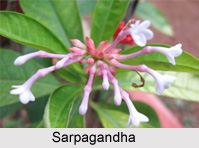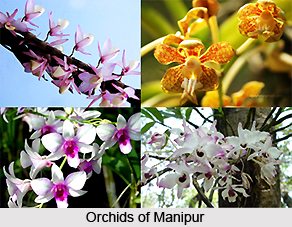 Saffron Flower is a well known flower plant which belongs to the botanical family, Iridaceae. A spice made from the dried stigma of the flower of saffron crocus is considered the world`s most expensive spice. The plant has various uses including culinary and medicinal and is found quite extensively throughout India. The origin of saffron dates back to more than 3,000 years and is mentioned in various historical documents found in the Mediterranean, Asian and European countries. The Chinese historical documents of the 3rd century AD referred saffron to have a Kashmiri provenance.
Saffron Flower is a well known flower plant which belongs to the botanical family, Iridaceae. A spice made from the dried stigma of the flower of saffron crocus is considered the world`s most expensive spice. The plant has various uses including culinary and medicinal and is found quite extensively throughout India. The origin of saffron dates back to more than 3,000 years and is mentioned in various historical documents found in the Mediterranean, Asian and European countries. The Chinese historical documents of the 3rd century AD referred saffron to have a Kashmiri provenance.
Origin of Saffron
According to other historical evidences saffron was brought to India by the Persian rulers around 500 BC. The Persian rulers transplanted the Persian saffron crocus corms to the Kashmiri soils, once they conquered Kashmir. According to ancient Chinese historical account an Arhant Indian Buddhist missionary named Madhyantika (or Majjhantika) sowed Kashmir`s first saffron crop when he was sent to Kashmir in the 5th century BC. Saffron cultivation and its uses are believed to spread through the Indian subcontinent from Kashmir. The huge popularity of saffron during that time made it the official colour for Buddhist robes and mantles, immediately after the death of Lord Buddha.
The Phoenicians began cultivation of saffron in India during the 6th century BC and also started marketing the Kashmiri saffron by utilising their extensive trade routes. Saffron is used regularly for anointing Gomateshwara, as part of the Mahamastakabhisheka festival, since 978-993 AD. However, according to the traditional Kashmiri legends, saffron was brought to the region by two Sufi ascetics, Khwaja Masood Wali and Hazrat Sheikh Shariffudin, during the 11th and 12th centuries AD. A golden-domed shrine and tomb dedicated to those Sufis can be found in the saffron-trading village of Pampore, India, till today. However, famous Kashmir poet and scholar Mohammed Yusuf Teng differed with this history of saffron and stated that the plant had been cultivated in Kashmir for more than two millennia. The Kashmiri Tantric Hindu epics of that time mention about saffron cultivation as well.
Nature of Saffron
Saffron is a small bulbous perennial plant with the botanical name of Crocus sativus Linn. The low growing plant grows 15 to 25 cm high and has an underground globular corm. It is mainly cultivated for its large, scented, blue or lavender flowers. The flowers of saffron plant have divided, orange coloured stigmas, which along with the style-tops yield the saffron of commerce. The flowering period of saffron starts during middle or late October and lasts only until the first or second week of November. However, the number of saffron flowers and the time of blooming in any year are dependent upon the temperature prevalent in spring and autumn and upon the amount of rainfall.
Saffron is known by different names in various Indian languages. In Sanskrit, the plant is named as Keshara, Kunkuma, Aruna, Asra and Asrika. The Hindi and Punjabi names of the plant are Zaffran and Kesar and it is called as Zaffran in Bengali. The Gujarati speaking people know the plant as Keshar, while in Kannada it is called as Kunkuma Kesari. In Kashmiri, saffron is known as Kong and the Marathi speaking people call it as Kesar and Kesara. While it is called as Kungumapu in Tamil, the Telugu name of saffron is Kunkumapuva. In Urdu it is popular as Zaffran and Jafranekar.
The state of Jammu & Kashmir is the place where saffron is predominately cultivated in India. In fact, Kashmir is considered one of the three prominent cultivating places of saffron all over the world. The state of Himachal Pradesh is also counted among the premium cultivating places of saffron in India. The ideal environment for cultivation of saffron is cool dry climate and rich soil with excellent drainage and organic content. India is one of the premium producers and exporters of top-grade `coupe` saffron around the world. Saffron is also used quite extensively for self-consumption in different parts of India. There are three grades of saffron available in Indian market and they are known as Shahi Saffron, Mogra saffron, and Lachha Saffron.
 Uses of Saffron
Uses of Saffron
Saffron has many uses in India. It is frequently used for culinary and medicinal purposes. In ancient period, the Kashmiri saffron was used as a fabric dye and also for treating depression. Saffron stigmas were soaked in water to yield a golden-yellow solution and were then used as a fabric dye. The usable saffrons are produced by drying the stigmas and part of the styles of the purple autumn crocus. Saffron has a bitter taste and a penetrating aromatic odour. It can be added to various food items for colouring, flavouring and also for taste. In fact, saffron is considered one of the oldest and most expensive spices in the world. For its unique aromatic feature, saffron is commonly used in preparing food items like baked goods, cheeses, confectionaries, curries, liquors, meat dishes, and soups, etc.
Apart from its culinary uses, saffron has also been used for serving several medicinal purposes since the ancient period. It has carminative (suppressing cramps and flatulence) and emmenagogic (enhancing pelvic blood flow) properties. It is also used as herbal medicine for curing respiratory infections and disorders like coughs and common colds, scarlet fever, smallpox, cancer, hypoxia, and asthma, etc. It is used in treatment of other health disorders like blood disorders, insomnia, paralysis, heart diseases, flatulence, stomach upsets, gout, chronic uterine haemorrhage, dysmenorrhoea, amenorrhea, baby colic, eye disorders, etc. as well. Saffron is also used as a perfume.
As a whole, saffron can be described as quite a useful plant that has limited cultivation areas. The limited cultivation of the plant has made it one of the most expensive spices while its numerous uses have made it one of the most sought after plants all over the world.











